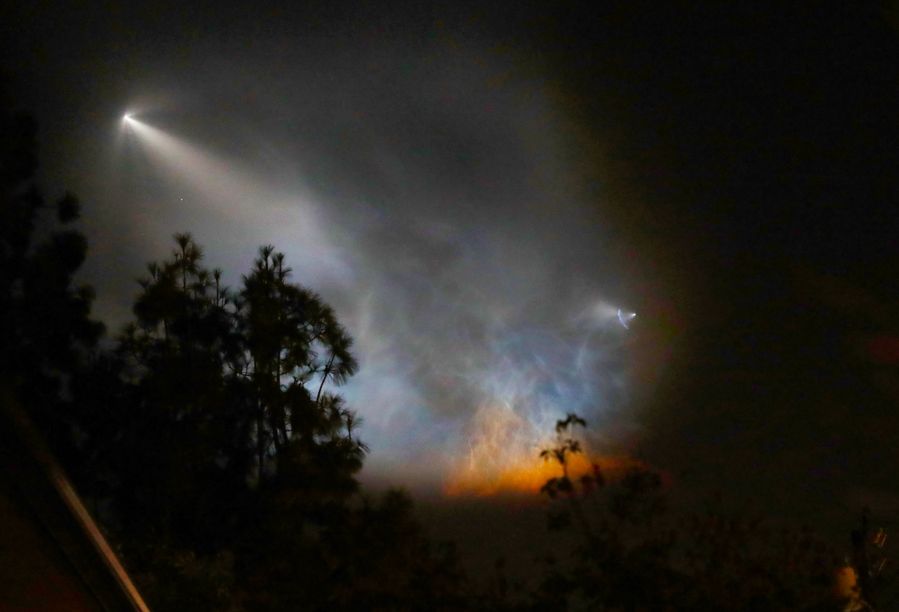
A SpaceX Falcon 9 rocket lights up the sky over Los Angeles, California, the United States, on Oct. 7, 2018. U.S. (Xinhua/Li Ying)
SpaceX plans to launch into space about 12,000 Starlink satellites by 2024, preluding a greater plan to launch 30,000 additional ones, bringing the total to 42,000.
WASHINGTON, Feb. 17 (Xinhua) -- U.S. private space company SpaceX launched its fifth batch of 60 Starlink satellites into space on Monday, in an effort to build at minimum a 12,000-strong satellite network capable of providing broadband internet services.
The Falcon 9 rocket, carrying the satellites, lifted off at 10:05 a.m. Eastern Standard Time (1505 GMT) from Space Launch Complex 40 at Cape Canaveral Air Force, Florida, according to a live broadcast by SpaceX.
SpaceX designed Starlink to provide continual internet coverage around the world, using a network of satellites in low-Earth orbit.
Falcon 9's reusable first stage missed a landing on SpaceX's drone ship in the Atlantic Ocean. It didn't appear as scheduled upon the drone ship about nine minutes after the liftoff, according to the live broadcast.
This first stage previously launched two supply missions for the International Space Station in May and July of 2019, and the JCSAT-18/Kacific1 mission in December of 2019.
About 15 minutes after the liftoff, the satellites were deployed. They will be moved into their intended orbits and operational altitude of 550 km after checks take place, according to SpaceX.
SpaceX plans to launch into space about 12,000 Starlink satellites by 2024, and has revealed a bigger plan to launch 30,000 additional ones, bringing the total to 42,000.
Each Starlink satellite weights approximately 260 kg and features a compact, flat-panel design that minimizes volume, allowing for a dense launch stack to take full advantage of Falcon 9's launch capabilities, according to SpaceX.
The company's internet service will be available in the northern United States and Canada at some point this year, with global coverage planned for 2021. ■



